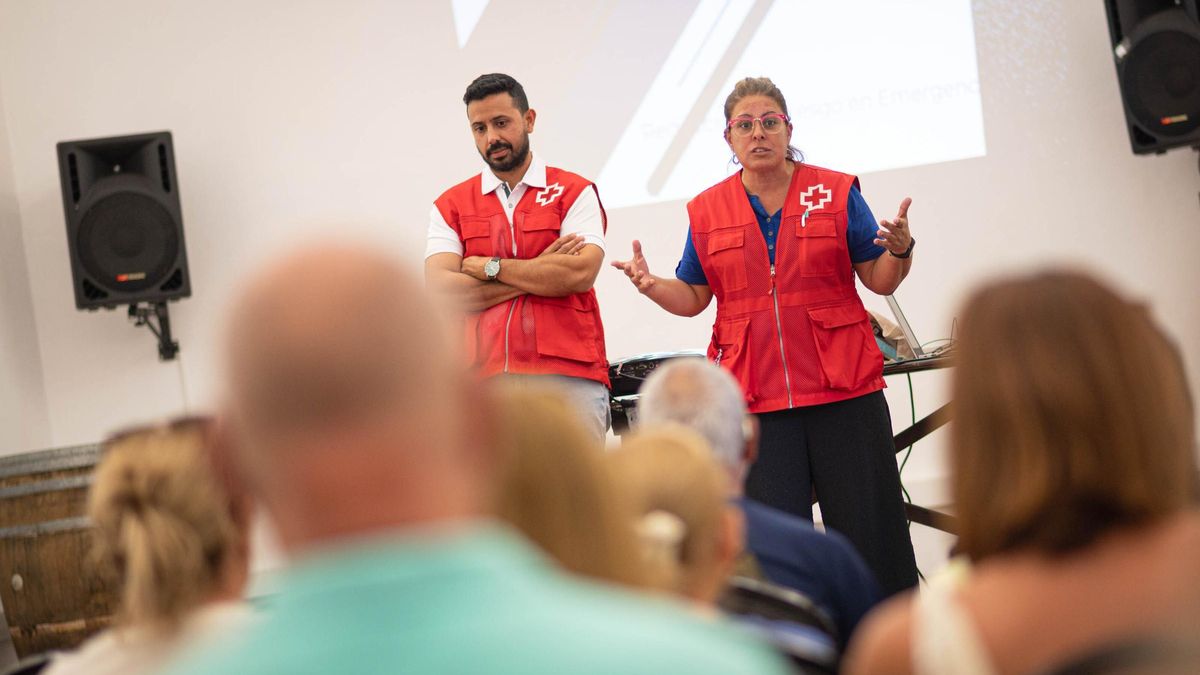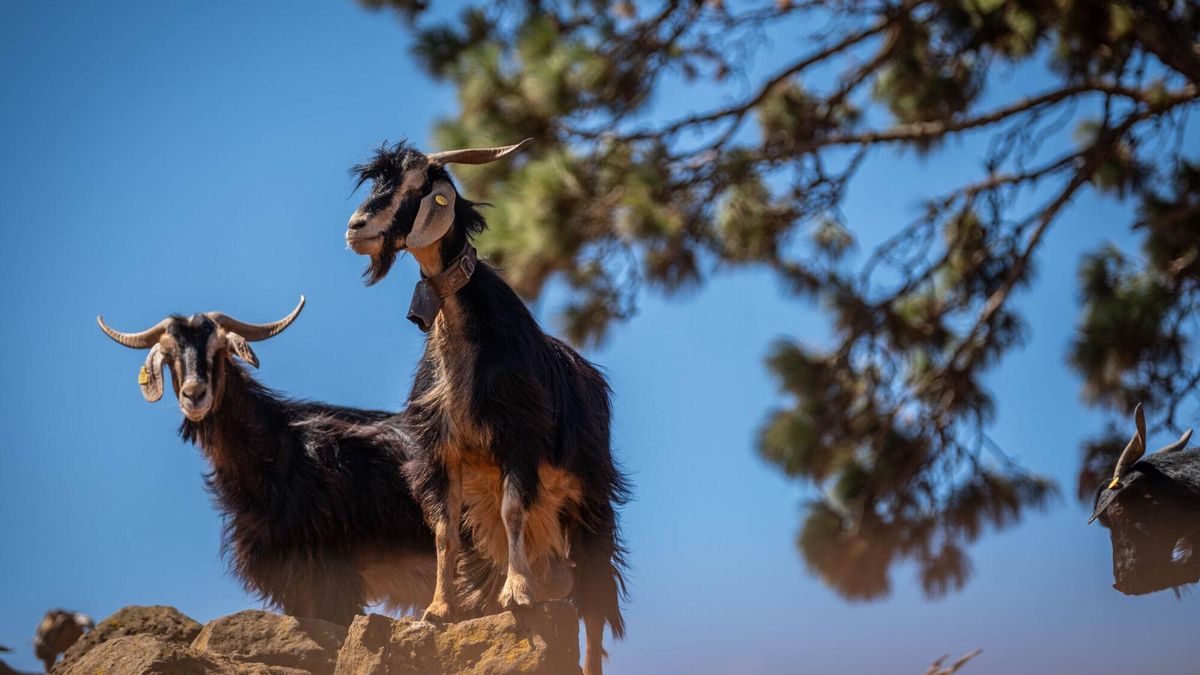Manuel Díaz lives in an area at very high risk of being affected by a volcanic crisis: the San Pedro neighbourhood, close to the centre of Garachico. He admits he is aware of this but clarifies that all the residents of the municipality are in the same situation and they know it.
“The lava is in the collective memory of Garachico,” he states, referring to the eruption that affected the town in 1706, which caused the most damage in Tenerife’s history. “When we hear the word volcano, all Garachiquenses get a little anxious.”
A “Very Appropriate” Place
This is why Manuel Díaz and other residents of this northern locality find it “very appropriate” that the Cabildo of Tenerife has chosen Garachico for the first volcanic eruption drill to be held in the Canary Islands next Friday, the 26th.
“We’ve all heard stories from our grandparents about what happened in 1706,” recalls this resident, adding: “Back then, there were no means of warning, so no one alerted us. The lava caused severe damage. You can still see the marks.”
Manuel Díaz is one of the Garachiquenses who has taken part in the talks initiated by the Cabildo last Monday to prepare the population on how to respond to an emergency such as a volcanic crisis.
European Project
The informative sessions and the drill, which will take place from Monday 22nd to Friday 26th of this month, are part of the EU-Modex project, an exercise aimed at assessing and reinforcing Tenerife’s response capacity in the event of an eruption, a risk that is always present on a volcanically active island.
The talks at the Convent of San Francisco will conclude this Thursday 4th September. They will then move on to other neighbourhoods and educational centres in the area and, following the evacuation drill on Friday 26th in the Muelle Viejo neighbourhood, will extend to the other 30 municipalities of Tenerife.
Training a Million Inhabitants
The challenge, according to the island’s Emergency Director, Iván Martín, is that “the nearly one million inhabitants of the Island receive training on what to do in case of an emergency being declared.”
“What do we do with the animals?,” asks a local resident during Tuesday’s talk attended by about thirty people, exclaiming: “I’m not leaving my house without my puppies!”
Dácil León, director of the Emergency Unit of Red Cross, and Eric Quintero, a technician in that same unit, respond to this woman and the other attendees. They primarily explain the key concepts of an alert, who decrees them, how they are transmitted, and the basic steps to follow.
No Imminent Risk
In his introduction, Iván Martín informs them that “there is no imminent risk of eruption in Tenerife,” and that the Island has made significant progress in prediction and forecasting mechanisms for a volcanic crisis, explaining why the Cabildo chose Garachico for the drill.
The attendees, in any case, already know from their family’s accounts what happened that long night of May 4th to 5th, 1706. This is true for Magdalena González, a resident of the Las Cruces neighbourhood. “My grandparents told me that our ancestors lost everything they had in that catastrophe,” she recalls, expressing gratitude for the “very valuable” information provided in these conferences.
The Catastrophe of 1706
Panic spread from 8:00 PM on that evening 319 years ago, when the small tremors that had been recurring for months suddenly increased in intensity. “The large earthquakes originated with such ferocity that they terrified everyone,” wrote Fray Domingo José Casares, a scholar at the Convent of Santo Domingo de La Laguna, in one of the few documents that remains about those events.
“In the houses, the roofs began to make cacophonous noises until they gave way, and the bells could be heard tolling with mournful strikes as if announcing death,” details Casares, who states that many residents ran to the churches for protection. They sensed the worst was coming.
A Population on Edge
The tremors kept the residents on edge all night until an hour before dawn on May 5, 1706, when a distant explosion abruptly rang out. Other explosions soon followed.
At 1,300 metres altitude, in the steep slopes of Garachico and 6.5 kilometres from the coastal town, a fracture of 950 metres with over 12 eruptive foci opened up. This is where the lava began to flow, not far from the Teide.
The eruption of what became known as the Trevejo volcano –also referred to as Arenas Negras or Montaña Negra– was the most socially and economically impactful event recorded in the history of Tenerife.
The flows and lava balls, along with the thousands of fires ignited in their rapid descent, wiped out crops, homes, public spaces, and a significant part of what had been Tenerife’s main port. There were no fatalities, but there were extensive material damages.
A Heightened Sensitivity
Margarita Palenzuela, who attended the talk from Genovés, agrees that “here we feel a special sensitivity when we see news about earthquakes, volcanic activity, and the risk of eruption.”
It is possibly in this locality where information regarding the over a hundred seismic swarms associated with volcanic activity has generated the most concern, which have occurred on the Island, primarily in the Teide, since 2017. It is also where there has been the most discourse recently about this geological process that formed the Canary Islands 30 million years ago, especially since last year when the drill was announced.
The Film Shoot
Interestingly, the principal part of a Spanish film starring William Levy and Maggie Civantos was shot here in 2024. This romantic action comedy about a volcanologist and a pilot who fall in love while an eruption threatens Garachico could only be titled: Under a Volcano.
Another local resident, José Gutiérrez, appreciates these lectures initiated by the Cabildo for “filling the gaps that many people on the Island have regarding natural threats and how to act.” “I didn’t know how plans were structured and what the main guidelines were,” he notes, emphasising that “what has become clear is that it is essential for the population to be informed.” “Look at what happened in 1706, when the lava destroyed the port and many monuments,” he adds.
In the conference room of the convent, Dácil León and Eric Quintero clarify the need to be resilient, to have the ability to face any unforeseen events, especially those that pose a significant threat. They caution that to achieve this, people must know how emergencies work and two fundamental matters: to be very attentive to information from official agencies and to take alerts very seriously.
Never Again
“Who hasn’t dismissed an alert and ignored warnings?,” Dácil León asks, before admitting she has done so herself on occasion. The attendees nod in agreement. Likely, none will ever do it again after this discussion.














